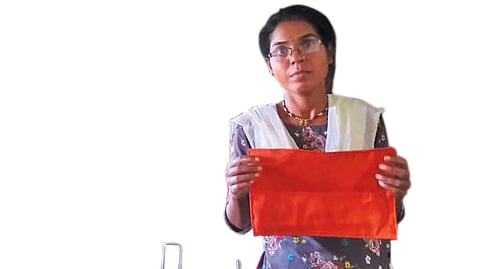

“As long as I am here, I have to observe kurma,” says Sarita Kumre, a resident of Sitatola village in Maharashtra’s Gadchiroli district. The practice she refers to is followed by the Madia tribal community of the district, as per which girls and women stay isolated in a hut, away from their houses, during the menstruation cycle. “The belief is that by staying at home during periods, we would bring bad luck like poor agricultural yield,” she says. This hut, where the menstruating women stay, is referred to as kurmagarh. Sarita says these huts usually lack proper bathroom or kitchen facilities and do not have access to electricity. “As an educated woman, I know the practice is unnecessary. But the superstition is so deep-seated in the minds of individuals that it is difficult to root it out,” she says. Over the past few years, Sarita and several other women from Madia community have observed that the restrictions are now less severe.
“Earlier, we were not allowed to leave the kurmagarh or meet even our families till our period ended. Now, we can move about and go up till the courtyard of our house,” Sarita says. This change is due to the efforts of some women volunteers from the Madia community to spread awareness about menstruation and urge them to stop kurma. They are aided by SPARSH Gadchiroli, a non-profit working with tribal communities.
“We began to work on ending kurma in 2014,” says Dilip Barsagade, founder of the non-profit and an associate professor at Fule-Ambedkar College of Social Work, Gadchiroli. He took up the cause after one of his students, who belonged to the Madia community, fell ill during her isolation period at the kurmagarh. “We conducted a survey of 223 kurmagarhs in the district. We noted some 32 women had died while at the kurmagarh due to reasons like snake bites, animal attacks or lack of emergency medical attention,” he says. “We prepared reports for district and tribal authorities, but action was slow,” he adds.
So, Barsagade and his team gathered 18 women volunteers to spread awareness in about 37 villages. But it was difficult. “Our families support us, but the larger community does not,” says Babita Kumre of Sitatola. While most people cite it as a matter of tradition, others are afraid of the consequences. “If we refuse to go to the kurmagarh, we will be called before the panchayat and told to feed the entire village, which is an expensive ordeal,” says another resident, Chetna Mandal.
The volunteers and SPARSH then decided to shift focus. “We improved living conditions at kurmagarhs by ensuring that the huts have proper roofs, bathrooms with doors, and electricity connections,” says Barsagade. To ensure access to hygienic sanitary napkins, some women were also trained to design and make reusable cloth pads, which are now sold in six villages.
“The women volunteers feel more empowered to stand against kurma, and some of them have stopped following the practice. We hope to see more progress soon,” says Barsagade.
This was originally published in the 16-31 October, 2024 print edition of Down To Earth